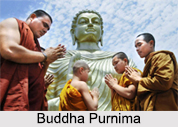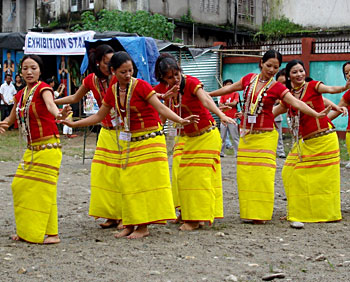 The temple of Venkateshwara in Andhra Pradesh is one of the richest shrines in the whole of India. Situated in an extensive mango and Sal grove on a hill in the Eastern Ghats, the shrine attracts pilgrims round the year. The main festival, however, is the Brahmotsava held in September and lasts for ten days.
The temple of Venkateshwara in Andhra Pradesh is one of the richest shrines in the whole of India. Situated in an extensive mango and Sal grove on a hill in the Eastern Ghats, the shrine attracts pilgrims round the year. The main festival, however, is the Brahmotsava held in September and lasts for ten days.
Aalaya Suddhi and Alankaram
Before the commencement of Brahmotsava, the temple of Lord Sri Venkateshwara is cleaned. The temple premises and its surroundings are decorated with flowers and mango leaves. This process is called Aalaya Suddhi and Alankaram (decoration).
Mritsangrahanam
On the day prior to the first day of Brahmotsava, the temple officials pray to deities like Vishvaksena, Anantha, Sudarshana and Garuda. They also offer prayers to Mother Earth and collect a small quantity of earth, with which the Ankurarpanam ritual is conducted, by which the earth is spread in a room and nine kinds of cereals are sown in it. This process is called Mritsangrahanam.
Start of Brahmotsava
After Mritsangrahanam, the Dwajarohanam (hoisting the flag or garudadhwaja) signals the start of the Brahmotsava. It is carried out at the Dwajasthambham, near the Nadimi Padi Kavili inside the temple complex. The temple officials hoist the flag (with a picture of Garuda on it) to the chanting of Vedic mantras by the temple priests. It is believed that Garuda goes to Devalokam to invite Gods like Brahma, Indra, Yama, Agni, Kubera and Vayudeva and sages like Vasistha and Vishwamitra.
Choornabhishekam
Then, they bathe the lord and his consorts after anointing them with sandalwood powder. This is called Choornabhishekam. This is done on the morning of the ninth day of the Brahmotsava. The idol is then, taken in a procession around the streets of Tirumala in different vahanas (vehicles). The temple priests distribute the sandalwood powder used for the Lord to devotees. It is believed that the sandalwood powder has the power of clearing obstacles from one`s path. The temple priests perform Naivedyam (food offered to Lord) after the procession.
Snapanam
Snapanam (also called the Utsavananthara Snapanam) is the process of bathing the Lord with herbal water after the procession. It is believed to relieve the Lord from the strain he has undergone during the procession.
Chakrasnanam
On the morning of the last day of Brahmotsava, the Lord, his consorts and Sri Sudarshanachakram are bathed in the Swami Pushkarini. This is called Chakrasnanam. Devotees can also bathe in the Swami Pushkarini, along with Sri Sudarshanachakram. It is considered to be a very sacred ritual, and devotees participate in this ritual, irrespective of religion, caste or creed.
Devatodwasanam
Then lastly, the ritual of seeing off the rishis and Gods to Devalokam is called Devatodwasanam. It is performed after the daily prayers.
Dwajarohanam
Dwajarohanam is carried out on the evening of the last day of Brahmotsava.



















